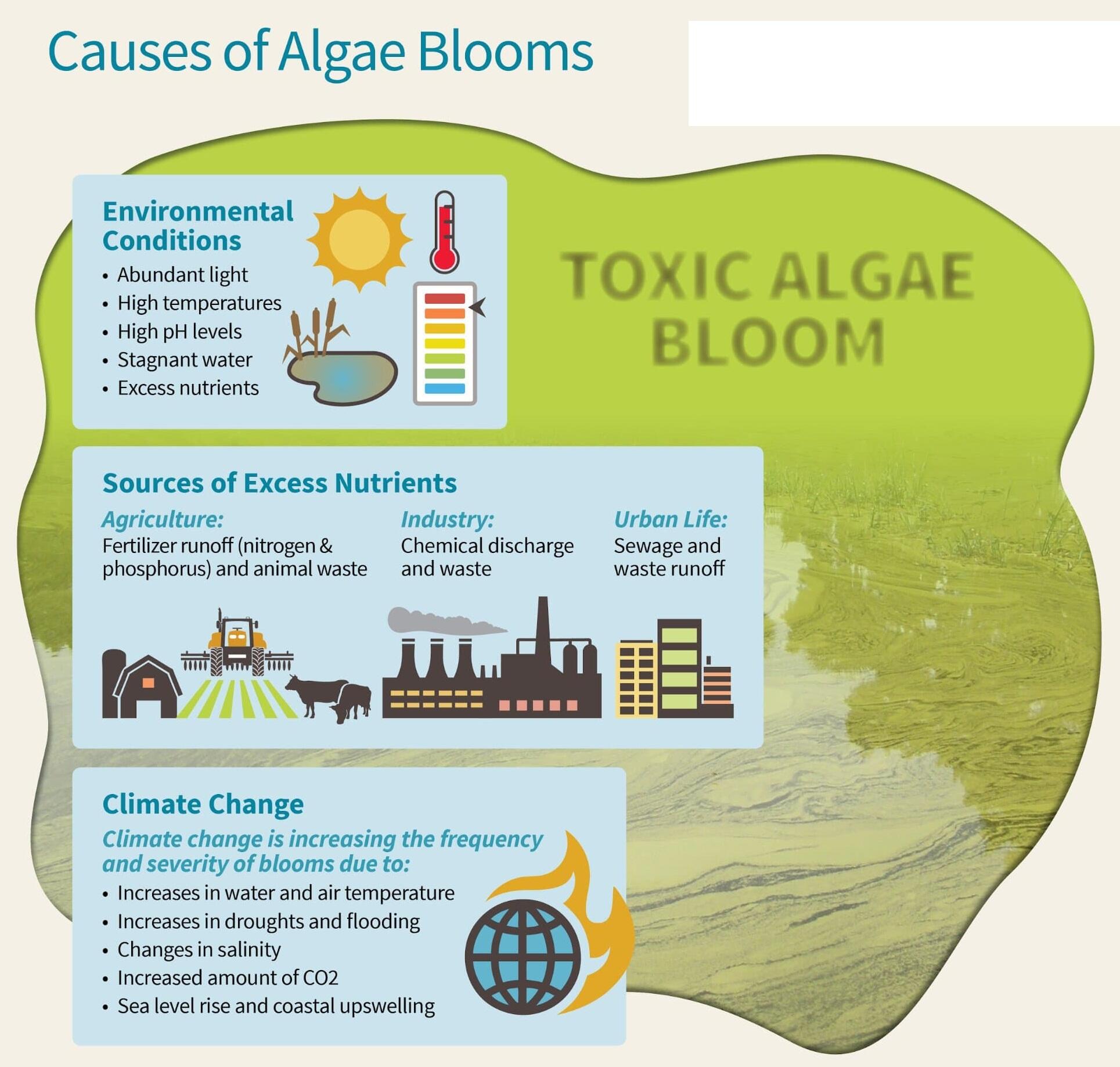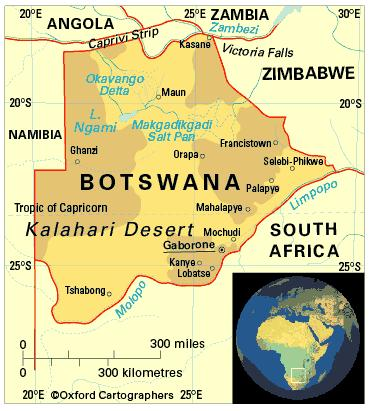Biodiversity & Environment
African Elephant dying due to Cyanobacteria
- 22 Sep 2020
- 5 min read
Why in News
Neuro-toxins in water produced by cyanobacteria killed more than 300 African elephants in the Okavango delta region, Botswana (country in Southern Africa).
- Neuro-toxins are substances that damage, destroy, or impair the functioning of neural tissue.
Key Points
- Cyanobacteria:
- Cyanobacteria, also called blue-green algae, are microscopic organisms found naturally in soils and all types of water.
- These single-celled organisms (bacteria) live in fresh, brackish (combined salt and freshwater), and marine water.
- These organisms use sunlight to make their own food.
- In warm, nutrient-rich (high in phosphorus and nitrogen) environments, cyanobacteria can multiply quickly.
- Not all produce toxins but scientists say toxic ones are occurring more frequently as climate change drives up global temperatures.
- Climate Change and Algal Bloom: An algal bloom is a rapid increase in the population of algae or cyanobacteria in an aquatic system.

- Warming water temperature:
- Toxic blue-green algae thrive in warm, slow-moving water.
- Warmer water due to climate change might favor harmful algae.
- Warmer temperatures prevent water from mixing, allowing algae to grow thicker and faster.
- Changes in salinity:
- Climate change might lead to more droughts, which make freshwater saltier. This can cause marine algae to invade freshwater ecosystems.
- Higher carbon dioxide levels:
- Algae need carbon dioxide to survive. Higher levels of carbon dioxide in the air and water can lead to rapid growth of algae, especially toxic blue-green algae that can float to the surface of the water.
- Changes in rainfall:
- Climate change might affect rainfall patterns, leading to alternating periods of drought and intense storms. This can cause more nutrient runoff into water bodies, feeding more algal blooms.
- Warming water temperature:
- The African elephant:
- It is the largest animal walking the Earth.
- Their herds wander through 37 countries in Africa.
- They are vulnerable as per the International Union for Conservation of Nature (IUCN) Red List.
- African elephants in Botswana, Namibia, South Africa and Zimbabwe are included in the Convention on International Trade in Endangered Species of Wild Fauna and Flora (CITES) Appendix II.
- Appendix II includes species not necessarily threatened with extinction, but in which trade must be controlled in order to avoid utilization incompatible with their survival.
- Two Subspecies: The Savanna (or bush) elephant and the Forest elephant.
- Savanna elephants are larger than forest elephants, and their tusks curve outwards.
- Forest elephants, a distinct subspecies of African elephants, are uniquely adapted to the forest habitat of the Congo Basin, but are in sharp decline due to poaching for the international ivory trade.
- The World Elephant Day is celebrated on 12th August every year to spread awareness for the conservation and protection of the largest mammal on land.
- The day was launched in 2012 to bring attention to the urgent plight of Asian and African elephants.
Botswana
- It is a landlocked country of southern Africa.
- Botswana is mostly flat with a few hills, most of its highest points located along the south-east section of the country (the eastern edge of the Kalahari Basin).
- The semi-arid Kalahari Desert covers about 70% of Botswana's surface.
- While Kalahari does receive about 500 millimetres in the wettest parts per annum, the Kalahari is considered a desert because it has a vast surface area covered with sand.
- Biodiversity: It is home to plants and animals, mostly different types of acacia trees, animals like lion, cheetah, leopard, hyena, antelopes, meerkats, as well as many birds species and reptiles.
- Indegenous People: It is also home to the tribes like- San people (Bushmen), Tswana, Kgalakgadi, and Herero people.
- Okavango Delta: It is one of the world's largest inland deltas.
- It spans about 15,000 square kilometres and is relatively flat topography.







